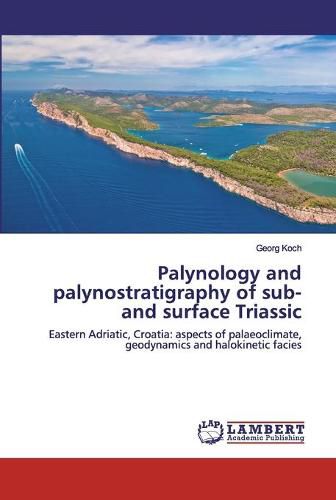Readings Newsletter
Become a Readings Member to make your shopping experience even easier.
Sign in or sign up for free!
You’re not far away from qualifying for FREE standard shipping within Australia
You’ve qualified for FREE standard shipping within Australia
The cart is loading…






This title is printed to order. This book may have been self-published. If so, we cannot guarantee the quality of the content. In the main most books will have gone through the editing process however some may not. We therefore suggest that you be aware of this before ordering this book. If in doubt check either the author or publisher’s details as we are unable to accept any returns unless they are faulty. Please contact us if you have any questions.
Triassic palynostratigraphy from on- and off-shore wells and surface of the Croatian eastern Adriatic (Adria microplate) suggests continuous Ladinian-Rhaetian sedimentation of evaporites and dolomites as recorded in the reference Vlasta-1 well.Correlation of Vlasta-1 with coevals from N America, Europe, circum-Mediterranean and NW Australia revealed good compliance.During the Ladinian-Rhaetian, Adria microplate was characterized by stable (semi-)arid climate.Sub- and surface Ladinian tuff bearing sediments contain reworked Permian-early Anisian palynomorphs due to depositional conditions created on Adria during the Ladinian aborted rifting phase.The Triassic of Vlasta-1 reflects primary depositional relationships of the central Adriatic sub- and surface lithostratigraphically contemporaneous deposits before being deformed by the Ladinian-middle Carnian halokinetic facies as recorded in Vlasta-1.Surface occurrences of basalt-andesite boulders in the central Adriatic are related to diapiric structures because the effusions were syngenetic with the Ladinian part of the halokinetic facies.Halokinetic tectonics is the main source of seismicity in central Adriatic.
$9.00 standard shipping within Australia
FREE standard shipping within Australia for orders over $100.00
Express & International shipping calculated at checkout
This title is printed to order. This book may have been self-published. If so, we cannot guarantee the quality of the content. In the main most books will have gone through the editing process however some may not. We therefore suggest that you be aware of this before ordering this book. If in doubt check either the author or publisher’s details as we are unable to accept any returns unless they are faulty. Please contact us if you have any questions.
Triassic palynostratigraphy from on- and off-shore wells and surface of the Croatian eastern Adriatic (Adria microplate) suggests continuous Ladinian-Rhaetian sedimentation of evaporites and dolomites as recorded in the reference Vlasta-1 well.Correlation of Vlasta-1 with coevals from N America, Europe, circum-Mediterranean and NW Australia revealed good compliance.During the Ladinian-Rhaetian, Adria microplate was characterized by stable (semi-)arid climate.Sub- and surface Ladinian tuff bearing sediments contain reworked Permian-early Anisian palynomorphs due to depositional conditions created on Adria during the Ladinian aborted rifting phase.The Triassic of Vlasta-1 reflects primary depositional relationships of the central Adriatic sub- and surface lithostratigraphically contemporaneous deposits before being deformed by the Ladinian-middle Carnian halokinetic facies as recorded in Vlasta-1.Surface occurrences of basalt-andesite boulders in the central Adriatic are related to diapiric structures because the effusions were syngenetic with the Ladinian part of the halokinetic facies.Halokinetic tectonics is the main source of seismicity in central Adriatic.